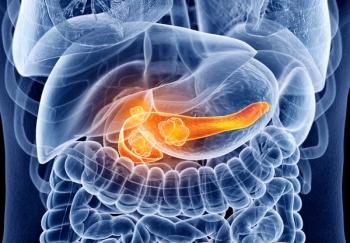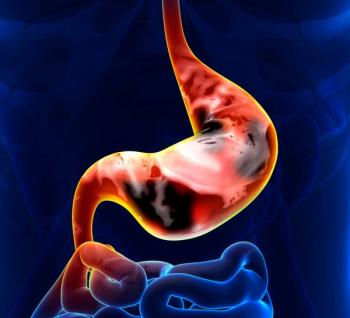
Liposomal Irinotecan Improves Survival in Metastatic Pancreatic Cancer
Nanoliposomal irinotecan combined with fluorouracil/leucovorin improved overall survival in metastatic pancreatic cancer patients who have already been treated with gemcitabine.
Nanoliposomal irinotecan combined with fluorouracil/leucovorin improved overall survival in metastatic pancreatic cancer patients who have already been treated with gemcitabine, according to updated results of the NAPOLI-1 phase III clinical trial presented at the 2016 American Society of Clinical Oncology (ASCO) Gastrointestinal Cancers Symposium, held January 21–23 in San Francisco (
“With a significant improvement in the 12-month overall survival rate and a well-defined safety and tolerability profile, the [nanoliposomal irinotecan] combination regimen is well-positioned to become the standard of care in the post-gemcitabine setting,” said Andrea Wang-Gillam, MD, PhD, of the Washington University School of Medicine in St. Louis, in a statement. “This new therapy offers hope for extended life expectancy in a patient population with limited options.”
About one in four patients in the nanoliposomal irinotecan combination arm survived at least 1 year. The 12-month overall survival rate was 26% in the nanoliposomal irinotecan plus fluorouracil/leucovorin arm compared with 16% in the fluorouracil/leucovorin arm.
The global, open label NAPOLI-1 trial randomized 417 previously treated metastatic pancreatic cancer patients to either nanoliposomal irinotecan, fluorouracil/leucovorin, or nanoliposomal irinotecan plus fluorouracil/leucovorin.
Six-month survival estimates were 53% (95% CI, 44%–62%) for the nanoliposomal irinotecan combination vs 38% (95% CI, 29%–47%) for fluorouracil/leucovorin alone. Twelve-month survival estimates were 26% (95% CI, 18%–35%) for the nanoliposomal irinotecan combination vs 16% (95% CI, 10%–24%) for fluorouracil/leucovorin alone.
Addition of nanoliposomal irinotecan to fluorouracil/leucovorin resulted in a median overall survival of 6.2 months compared with 4.2 months with fluorouracil/leucovorin alone (hazard ratio [HR], 0.75; P = .0417).
There was no survival advantage with nanoliposomal irinotecan monotherapy compared with fluorouracil/leucovorin (4.9 vs 4.2 months; HR, 1.08; P = 0.5).
These results were also
The most common high grade adverse events in the nanoliposomal irinotecan arm were neutropenia, diarrhea, vomiting, and fatigue.
Nanoliposomal irinotecan in combination with fluorouracil/leucovorin for was
Newsletter
Stay up to date on recent advances in the multidisciplinary approach to cancer.


















































































